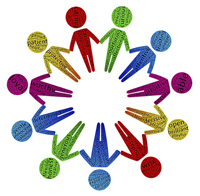 A workplace dress code creates a standard, professional appearance for employees who interact with the public. It can also ensure safety. Whether you can wear casual clothes, must dress up or receive a uniform, here are a few things you should know about your workplace dress code.
A workplace dress code creates a standard, professional appearance for employees who interact with the public. It can also ensure safety. Whether you can wear casual clothes, must dress up or receive a uniform, here are a few things you should know about your workplace dress code.
Dress Code Laws
Several federal and state anti-discrimination laws affect the dress code employers can implement. In general, dress codes cannot discriminate anyone based on:
Religion
Certain religious apparel is allowed in the workplace, but your company may restrict what you wear. Ask your boss to accommodate your religious beliefs. In cases, especially where safety is involved, you may be unable to wear your particular religious garment. Ask your religious leader for an exemption that allows you to work without it. If you are unable to get an exemption, ask your boss for a different position. He or she is required to explore all possible options before firing you.
Race
All dress codes should be nondiscriminatory to every race. Your employer cannot ask you to shave your beard or cut dreadlocks, for example, unless there is a safety or other essential business reason for doing so.
Disability
Employers must provide reasonable accommodations for disabled employees.
Gender
Any dress code guidelines can be different for men and women. However, it cannot give one gender significant employment advantage, inhibit equal employment access between genders or deny employment to men or women. For example, if your employer allows women to wear earrings, it must allow men to wear earrings too or ban earrings.
Sexual
Ensure your dress code does not promote sexual harassment. It cannot allow men to wear revealing clothing but discourage women from doing so, and dress code memos or the section of the employee handbook cannot show pictures of specific employees violating the dress code.
Certain Restrictions
There are several specific restrictions your employer may require.
Slogans or pictures – no political or religious slogans, advertisements or nude or semi-nude pictures on clothing
Rips, tears and holes in clothing
Baggy clothing
Sweat suits, yoga pants, jeans or other casual attire
Revealing attire, including open cropped shirts, shorts and see-through material
Footwear that’s loose, has a wedge or high heel or is slippery
Socks and other hosiery
Gang attire
Jewelry
Grooming
Check your employee handbook for more details on your company’s dress code. It should include specific restrictions and requirements as well as information on how your company will handle violations. Then follow the dress code as you preserve a safe, uniform and professional atmosphere.














